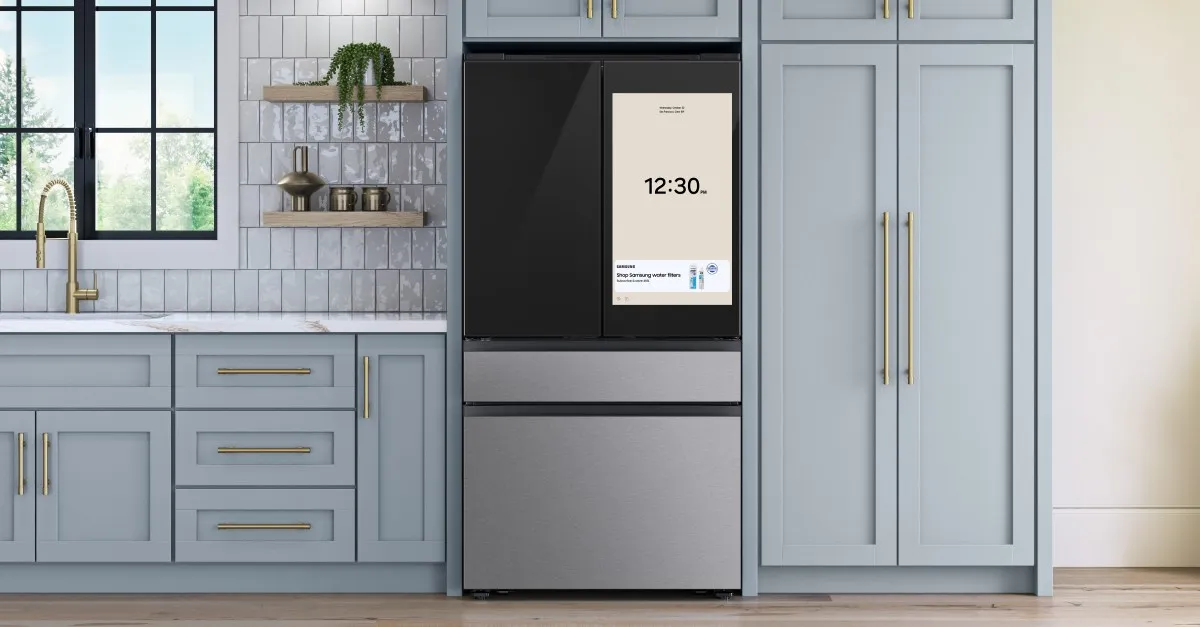
In an unexpected turn of events, Samsung has announced the arrival of advertisements on its popular Family Hub smart fridges. This initiative, confirmed by Shane Higby, head of Home Appliance Business at Samsung Electronics America, is set to launch on November 3rd. The fridges, which retail for over $2,000, will feature a new advertising widget that will rotate between various screens, delivering ads alongside news, calendar events, and weather forecasts.
The advertising widget will be integrated into the “Cover screen themes” of the Family Hub fridges, similar to the home screen of a tablet or smartphone. According to Samsung, the widget will display four rotating screens: one for news, one for calendar events, one for the weather, and one dedicated to “curated advertisements.” This widget will be positioned at the bottom of the fridge's display and will cycle every 10 seconds, with the option for users to swipe through them more quickly. Notably, the ads will only appear on specific themes, such as the Weather and Color themes, and will not be present on the Art or Album themes.
The software update featuring this widget will begin rolling out to all US-based Family Hub fridges equipped with the larger 21.5- and 32-inch screens this week, starting on October 27th. The first advertisements are expected to appear approximately a week later. This marks a significant shift for users who have enjoyed ad-free experiences with their fridges for the past five years.
The introduction of this advertising feature raises numerous concerns among users. Many feel that adding ads post-purchase is intrusive, especially when they did not buy their appliances under the assumption that they would be subject to advertising. While Samsung’s current offering of ads is less intrusive compared to the full-screen ads seen on devices like the Amazon Echo Show, the potential for future third-party advertisements remains a worry. Higby mentioned that while initial promotions would focus on Samsung products, the company may expand to include other brands based on user feedback.
Samsung is providing users with an option to disable the ads. To do so, users can navigate to the settings page on their fridge, scroll to the Advertisements section, and toggle off the ads. This action will completely remove the widget. Alternatively, if users appreciate the other features of the widget, they can dismiss individual ads, but new ones will continue to appear.
It is important to note that the new advertising widget will only be available on Family Hub fridges with larger screens. Samsung has confirmed that this feature will not be extended to devices with 9-inch screens or any other appliances featuring smaller AI Home screens. In earlier interviews, Samsung representatives indicated there were no plans for advertisements on these smaller devices, suggesting a shift in strategy.
When questioned about the rationale behind introducing ads, Higby stated that this pilot program aims to explore how connected appliances can provide useful, contextual information. While Samsung and other tech companies like Amazon claim to focus on delivering “curated” and “relevant” advertisements, many users remain skeptical. The prospect of having personalized ads invade their homes poses significant privacy concerns, particularly in multi-person households.
As this pilot program unfolds, Samsung is keen on gathering user feedback through customer service channels and social media. Users are encouraged to share their thoughts and experiences with the new advertising feature. In addition to the advertising updates, Samsung is also rolling out several new features with the latest Family Hub software update, including enhanced AI capabilities for food recognition, improved voice recognition with Bixby, and updated security features.
While the inclusion of ads in smart appliances may be unwelcome, it is essential to recognize the potential for beneficial updates that come with internet connectivity. Samsung's Family Hub update promises a more integrated experience with various smart home features, making it a topic of interest for many consumers.